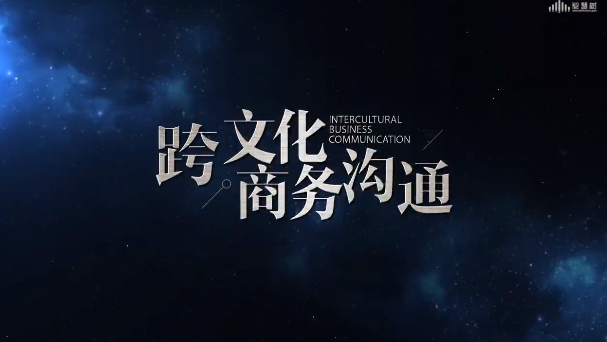第四章 Contrasting Cultural Values:本章主要从文化中的价值观的概述和霍夫斯坦德的文化维度两方面介绍文化价值观的比较。本章通过丰富的视频案例引出各个小节的主要内容,简明扼要的讲授了文化价值观的最基本要点以及在跨文化商务沟通中的作用与影响。在4.1中,课程首先概述了文化价值观,介绍了价值观的定义和特性,并列举了研究文化价值观最主要的三个文化价值观模式:即Edward T. Hall的文化价值观模型,Kluckhohn 和 Strodtbeck 的文化价值观取向,和霍夫斯坦德的文化维度。在本节中对Edward T. Hall的文化价值观模型和Kluckhohn 和 Strodtbeck 的文化价值观取向做了简要的介绍。在4.2中,课程详细介绍了霍夫斯坦德的6个文化维度,分别为:权利距离、不确定性回避、个人主义/集体主义、男性气质/女性气质、长期取向/短期取向、放纵/抑制。4.1Cultural Values:4.1.1 文化价值观文化价值观是文化中人们所接受的社会原则、目标或标准。本节主要介绍文化价值观的定义、特性和其对跨文化交际的影响。4.1.2 本节首先简要回顾了三位有影响力的跨文化学者及其文化价值模式。它们是研究文化价值观最主要的三个文化价值观模式:Kluckhohn 和 Strodtbeck 的文化价值观取向,和霍夫斯坦德的文化维度;接着本节对Edward T. Hall的文化价值观模型--即高/低语境文化理论进行了简要的介绍。4.1.3 本节主要对Kluckhohn 和 Strodtbeck 的文化价值观取向进行了概述。他们的文化价值观取向主要包括5个方面:人的本性(人性取向)、人类与自然的关系(人天取向)、人类对时间的态度(时间取向)、人类对不同行为的态度(行为取向)、人们之间的关系(人际取向)。[单选题]Power distance is a conceptual was developed by Hofstede to describe
4.2Cultural Dimensions of Hofstede:4.2.1 本节首先概述了霍夫斯坦德的文化维度理论,接着介绍了霍夫斯坦德的六大文化维度之一:权利距离。课程从权利距离的定义、高权利距离和低权利距离国家的概述和特点对比三大方面来讲解。4.2.2 本节介绍了霍夫斯坦德的六大文化维度之二:不确定性回避。课程从不确定性回避的定义、高不确定性回避和低不确定性回避国家的概述和特点对比三大方面来讲解。4.2.3 本节介绍了霍夫斯坦德的六大文化维度之三:个人主义/集体主义。课程从个人主义/集体主义的定义、个人主义和集体主义国家的概述和特点对比三大方面来讲解。4.2.4 本节介绍了霍夫斯坦德的六大文化维度之四:男性气质/女性气质。课程从男性气质/女性气质的定义、男性气质和女性气质国家的概述和特点对比三大方面来讲解。4.2.5 本节介绍了霍夫斯坦德的六大文化维度之五:长期取向/短期取向。与前四个基于IBM调查数据的文化维度不同,这一文化维度是基于东方文化中的“儒家理论”而设立的。课程从长期取向/短期取向的定义、长期取向和短期取向国家的概述和特点对比三大方面来讲解,并分析了相关案例。4.2.6 本节介绍了霍夫斯坦德的六大文化维度之六:放纵/抑制。2010年,该霍夫斯坦德的文化维度模型增加了第六个层面,即放纵与克制。这是基于保加利亚社会学家明可夫的研究而提出的,并借鉴了广泛的世界价值观调查。课程从放纵/抑制的定义、男性气质和女性气质国家的概述和特点对比、观念对比、和表现对比几大方面来讲解,并分析了相关案例。
the power difference between men and women
the power differential between developed and less developed countries
the extent to which the less powerful members of organizations and institutions accept and expect that power is distributed unequally
the power of multinational organizations
答案:the extent to which the less powerful members of organizations and institutions accept and expect that power is distributed unequally
[单选题]Hofstede’s _____ index measures the extent to which the less powerful members of organizations and institutions (like the family) accept and expect that power is distributed unequally.
cultural values
power distance
value orientation
cultural dimensions[单选题]These are the most significant studies of cultural values except _______.
Hall's High- and Low- Context Theory
Geert Hofstede's six Cultural Dimensions
Fons Trompenars’s model of culture with seven dimensions
Kluckhohn and Strodtbeck's five Value Orientations[单选题] The opinion that everyone has a position and clearly defined privileges is____.
none of the above
a view of individual orientation structure of social relationship
a view of hierarchical structure of social relationship
a view of group orientation of social relationship[判断题]Low-context communication is characterized by explicit speaking.
对
错[判断题]Chinese culture is high-context in comparison to western culture.
对
错[判断题]Cultures with a large power distance are hierarchical cultures.
错
对[判断题]At the core of uncertainty avoidance is the idea that the future is predictable.
错
对[判断题]Power distance in Hofstede's cultural dimensions is roughly similar to the value Kluckhohn calls hierarchy.
对
错[判断题]In a culture emphasizing masculinity, it is more possible for men to play a nurturing role.
错
对
温馨提示支付 ¥1.00 元后可查看付费内容,请先翻页预览!


